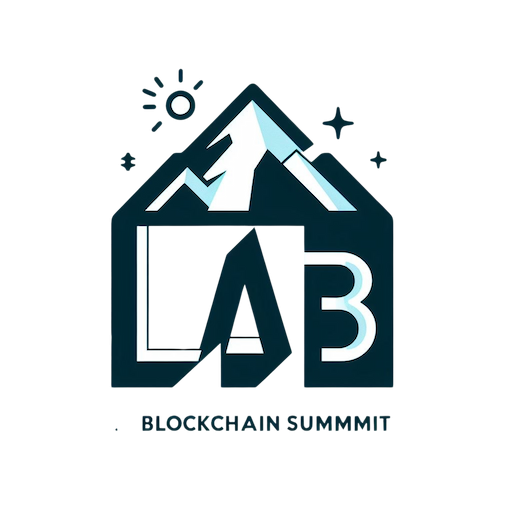
Had it ever crossed your mind that Ethereum’s network can process only about 15 transactions per second? With the growing popularity of decentralized applications, this limitation has become a significant bottleneck.
Layer 2 solutions aim to solve this problem by building on top of existing blockchain networks like Ethereum. They offer a way to increase transaction speed and reduce costs without compromising security.
As someone deeply invested in blockchain technology, I understand how frustrating slow transaction times and high fees can be. These issues often deter users from fully embracing the potential of decentralized platforms.
I remember my first experience with Layer 2—it felt like discovering a hidden gem that made everything smoother and faster. In this article, you’ll learn what Layer 2 is all about, its different types, and why it’s crucial for the future of blockchain. For more on the broader topic, check out blockchain or jump into specific key concepts.
Understanding Layer 2 Technologies
So, let’s jump into what Layer 2 is all about. Imagine Ethereum, the popular blockchain network, as a busy highway during rush hour. It’s packed with cars (transactions), moving painfully slow. That’s where Layer 2 comes in—it’s like adding an express lane for faster travel.
Layer 2 solutions are essentially secondary frameworks built on top of the main Ethereum blockchain (Layer 1). They handle transactions off the main chain to reduce congestion and speed things up. Think of it as taking a side road to bypass traffic jams.
Why Do We Need Layer 2?
Ethereum’s popularity means lots of users and decentralized applications (dApps) are vying for space on its network. With only about 15 transactions per second, it’s like trying to fit everyone into a single-lane tunnel—chaos ensues! High fees and slow speeds make using dApps frustrating.
Enter Layer 2 technologies. By processing transactions off-chain (not directly on the main Ethereum network), they significantly cut down wait times and costs. It’s kind of like having VIP access at a concert—you get in quicker without much hassle.
Types of Layer 2 Solutions
There are several types of Layer 2 solutions out there:
- State Channels: These let you conduct multiple transactions off-chain before recording them to the main chain later.
- Plasma Chains: Think mini-blockchains that work alongside Ethereum, handling loads of transactions before bundling them back onto the main chain.
- Rollups: These compress many transactions into one batch before posting it on Ethereum’s blockchain, saving space and cutting costs.
Each has its own quirks and benefits but they all aim to make using Ethereum smoother and cheaper.
My Personal Experience with Layer 2
When I first stumbled upon Layer 2 tech, I was skeptical—like when someone tells you pineapple belongs on pizza. But after diving in, I saw how much faster my crypto trading became. No more waiting forever for confirmations or paying sky-high fees just to move some digital coins around!
I remember transferring some ETH using a state channel solution; it felt like teleportation compared to traditional methods. And Plasma chains? They’re like having your own private toll-free highway next to the clogged public roadways.
The Future of Blockchain with Layer 2
What could this mean for us regular folks? Well, imagine being able to use dApps without worrying about slow speeds or high costs—it makes blockchain tech way more accessible! Plus, as these solutions evolve, we might see even cooler innovations that make interacting with crypto feel effortless.
Benefits Of Layer 2 Solutions

Layer 2 solutions seriously amp up the blockchain game. They’re like adding turbo boosters to a slow but steady car, making everything faster and cheaper without messing with security.
Scalability Improvements
Scalability is where Layer 2 shines. Imagine trying to get through a tiny door alongside hundreds of people; that’s Ethereum’s main chain on a busy day. Layer 2 opens up more doors. By processing transactions off the main chain, it can handle way more traffic. It’s like moving from a one-lane road to a multi-lane highway—no more bottlenecks! This means smoother experiences for everyone using decentralized apps (dApps). I remember when I first tried a dApp during peak hours—it was like waiting in line for concert tickets back in the day. But with Layer 2, it’s as smooth as online shopping.
Reduced Transaction Costs
Nobody likes high fees, especially not me. On Ethereum’s main chain, transaction costs (called gas fees) spike during busy times—it’s almost like surge pricing for rideshares but worse because there’s no alternative route! Layer 2 steps in here too. By moving transactions off-chain, it cuts down those pesky costs significantly. Think of it as taking a shortcut you found that avoids all toll roads. I’ve saved quite a bit since switching over to Layer 2 solutions; it’s like finding money in an old coat pocket every time I make transactions.
Enhanced Speed And Efficiency
Speed matters—I can’t count how many times I’ve waited impatiently for my transaction to go through on Ethereum’s main network while watching paint dry would be quicker! With Layer 2, transactions are processed super fast because they’re done off-chain and only settled periodically on the main chain. It’s like having express checkout at your favorite grocery store while everyone else is stuck in long lines. Remembering my last experience with EtherDelta before discovering these solutions feels like recalling dial-up internet days—painfully slow and frustratingly inefficient!
Popular Layer 2 Platforms
Let’s jump into some popular Layer 2 platforms. These are the superheroes saving us from the congestion and high fees on Ethereum’s main network.
Ethereum Layer 2 Solutions
Ethereum’s popularity has skyrocketed, but its traffic jams? Not so fun. That’s where Layer 2 solutions come to the rescue. Take Polygon (formerly Matic), for instance. It’s like a carpool lane that speeds up transactions and reduces costs without compromising security. Another cool kid on the block is Optimism. It scales Ethereum using a technique called optimistic rollups, which bundle multiple transactions together before adding them to the main chain—like packing for vacation efficiently.
Then there’s Arbitrum, another champion using rollups to enhance speed and reduce gas fees. I remember my first time using Arbitrum; it felt like moving from dial-up internet to broadband—so much faster!
Bitcoin Layer 2 Solutions
Bitcoin might be the granddaddy of cryptocurrencies, but even it needs some help with speed sometimes! Enter Lightning Network: it’s like giving Bitcoin an espresso shot. Lightning allows off-chain transactions that can process instantly and cost less than a penny—perfect for buying your morning coffee with crypto without waiting ages or paying more in fees than your latte costs!
Then there’s Liquid Network, created by Blockstream, focusing on faster transfers between exchanges while keeping assets secure—think of it as Bitcoin’s slick business suit for high-speed trading.
Ever tried Lightning? The first time I used it was mind-blowing; sending Bitcoin instantly felt futuristic, almost sci-fi-like… minus flying cars.
So, why should you care about these quirky yet genius solutions? Because they make crypto usable in everyday life! Imagine paying rent or splitting dinner bills with friends via cryptocurrency without pulling your hair out over transaction times or outrageous fees.
What’s next for these spunky sidekicks? Maybe seamless integration into online shopping or even regular bank accounts someday. Who knows? But one thing’s clear: they’re here to stay and make our digital lives easier.
Use Cases And Applications
Exploring Layer 2 solutions is like revealing a treasure chest in the world of crypto. These secondary frameworks built on top of the Ethereum blockchain can open up so many doors for different applications.
Decentralized Finance (DeFi)
Let’s talk about DeFi first. Imagine trying to buy a coffee, but instead of paying $5, you have to pay $50 in fees. That’s what happens sometimes with Ethereum’s network congestion. Layer 2 solutions swoop in like superheroes to save the day by slashing those high fees and making transactions faster.
For example, I once tried swapping tokens through a decentralized exchange (DEX) on Ethereum during peak hours. The gas fee was ridiculous! But when I used a DEX that operated on Layer 2, it felt like switching from dial-up internet to fiber optic. Smooth and quick! These improvements make DeFi platforms more accessible for small investors who might otherwise be scared off by high costs.
Layer 2 also brings scalability to DeFi projects, enabling them to handle more users without breaking a sweat. Think of it as upgrading from a one-lane road to a multi-lane highway; everyone gets where they’re going faster and without traffic jams.
Gaming And NFTs
Now let’s jump into gaming and NFTs (Non-Fungible Tokens). If you’ve ever waited forever for an online game transaction or paid sky-high fees just to mint an NFT, you’ll understand why Layer 2 is such a game-changer here too.
Imagine playing your favorite blockchain-based game where every move costs you extra time and money because of network congestion. It kills the fun, right? With Layer 2 solutions, these issues vanish faster than loot disappears in an RPG raid. Transactions happen almost instantly and at lower costs, keeping your gameplay smooth and immersive.
I remember minting my first NFT art piece directly on Ethereum—it was like watching paint dry while burning cash at the same time! But using an NFT marketplace that operates on Layer 2 made the process feel seamless and affordable. Artists can create more freely without worrying about prohibitive costs eating into their profits.
So whether you’re farming digital assets or collecting virtual cats (yes, that’s a thing), Layer 2 makes everything quicker and cheaper—leaving you more time for actual fun!
Challenges And Considerations
Layer 2 solutions sound like the magic bullet for blockchain woes, but they come with their own quirks. Let’s jump into some of these challenges.
Security Concerns
When using Layer 2 solutions, security is a biggie. Sure, these platforms speed things up and cut costs, but they’re not invincible. Imagine building a treehouse on a sturdy oak (Ethereum). The tree’s strong, but if your treehouse isn’t well-made, it could still collapse.
Layer 2 inherits Ethereum’s security to an extent, but there are risks. For instance, bugs in the smart contracts that manage Layer 2 transactions can be exploited by hackers. It’s like locking your front door while leaving the back one wide open! I once tried out a new dApp on a Layer 2 platform and found myself constantly checking forums for updates about potential vulnerabilities. Not exactly stress-free.
Interoperability Issues
Another hiccup with Layer 2 is getting different systems to talk to each other smoothly—think of it as trying to get cats and dogs to play nice together.
Different Layer 2 solutions don’t always play well together or with other blockchains. Your funds might be stuck on one platform when you need them elsewhere—a bit like having cash in one bank and needing it at another without easy transfer options. I remember moving assets between chains felt like exploring a maze blindfolded!
Future Outlook For Layer 2
So, what’s next for Layer 2? Picture this: I’m sipping my morning coffee and thinking about how Layer 2 could change the crypto game. We’ve already seen some cool stuff, but there’s way more on the horizon.
First off, imagine a world where you don’t have to spend half your paycheck on gas fees just to buy a cute NFT (Non-Fungible Token—basically digital art). With Layer 2 solutions getting better, that’s not far-fetched. Fees are dropping like it’s Black Friday every day. It’s going to be easier for regular folks (like us) to jump into DeFi (Decentralized Finance) without feeling like we need a Ph.D. in blockchain.
Then there’s scalability. Remember when Ethereum got clogged up with CryptoKitties? Yeah, that was wild. But with advancements in Layer 2 tech, those days could be behind us. Think of it as adding extra lanes to a highway that’s always jammed during rush hour. More cars can pass through smoothly now.
And what about gaming? If you’re into blockchain games or even considering dabbling in them, Layer 2 is set to make things way more fun and less frustrating. No one likes waiting forever for transactions to go through when they’re trying to level up or trade items.
Now let’s talk security because I know it’s still a worry for many of us. Developers are working hard on making these platforms safer than ever before. It’s like they’re building Fort Knox but for our digital assets instead of gold bars.
Interoperability is another biggie—getting different systems to play nice together. Right now, moving assets between various blockchains feels like exploring an obstacle course blindfolded (not fun). But improvements in this area mean smoother transfers and fewer headaches down the line.
I can’t help but wonder: will we see seamless integration with everyday financial activities soon? Imagine paying for groceries or splitting bills with friends using crypto without batting an eye! Sounds dreamy right?
